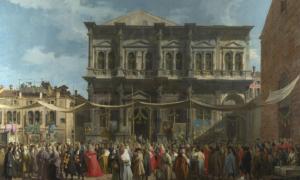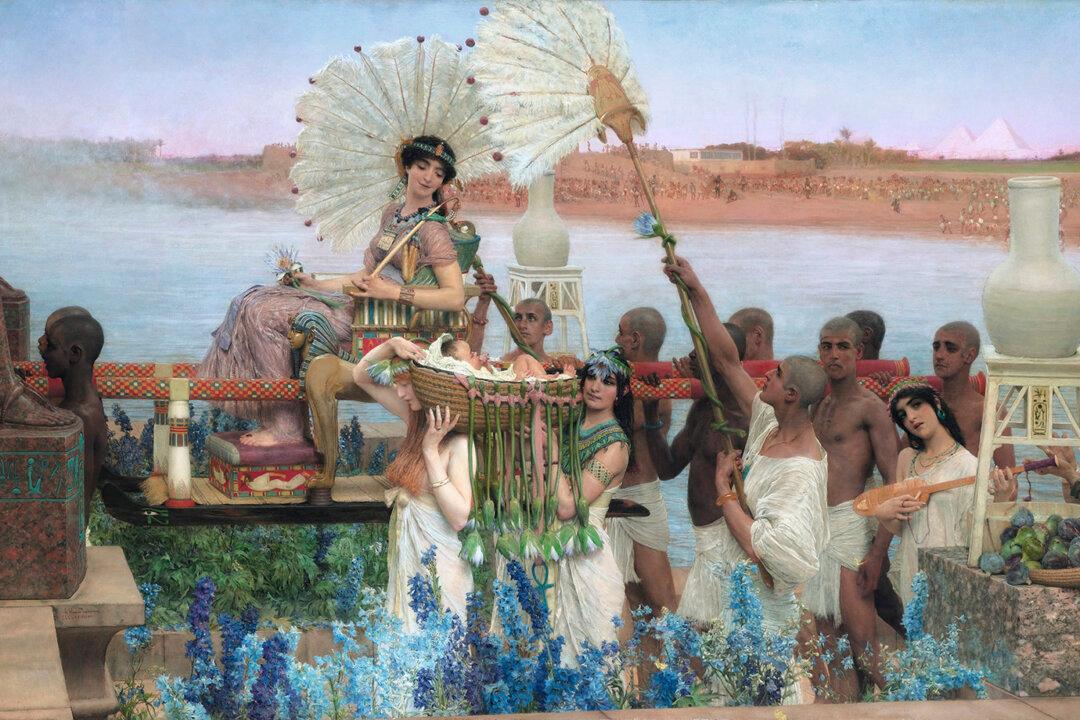Thomas A. Saunders III, who passed away in 2022, was an innovative businessman with a long career at Morgan Stanley and in private equity. In partnership with his wife, Jordan, who survives him, they were dedicated philanthropists in the realms of science, education, American history, military organizations, and the arts, lending works from their collection to museums around the world. Jordan designed the interiors of their homes, initially focusing on traditional decorative arts, including English and European furniture, silver, and Chinese Export porcelain.

Acquiring the ‘Best of the Best’
Their collecting course was forever altered one January day in New York City in 1998. Jordan was at Sotheby’s viewing an auction preview when she came face-to-face with a small, superb painting: Francesco Guardi’s “Venice, A View of the Church of the Redentore.” Jordan recounts, “It was a little jewel, and all afternoon, I kept coming back to visit it. … Perhaps you’ll think me crazy, but I swear I heard that little picture speak to me, ‘please buy me, buy me,” and she did.
From then on, over a three-year period, the Saunders acquired a large part of their Old Masters collection’s most important works. This 18th-century Guardi’s worth is estimated now at $4 to $6 million dollars. It is an intimate view in silvery blue tones of the Venetian island Giudecca and its Church of the Redentore, a masterwork by the Renaissance architect Andrea Palladio.
As Guardi’s own style evolved, he added imaginary elements to create poetic visions of light, line, and atmosphere. “Elegance & Wonder: Masterpieces from the Collection of Jordan and Thomas A. Saunders III” showcases a total of four Guardi lots. The top lot of the entire sale is a pair of Guardi paintings of quintessential sights—“Venice, A View of the Punta della Dogana and the Church of Santa Maria della Salute;” and “Venice, A View of the Churches of San Giorgio Maggiore and Santa Maria della Salute”—estimated to be worth $10 million to $15 million.

and “Venice, A View of the Punta della Dogana and the Church of Santa Maria della Salute," 18th century, by Francesco Guardi. Both oil on canvas, 21 1/8 inches by 33 7/8 inches. Sotheby's
Hornstein Collection Acquisitions
The Saunders’ first Guardi, bought at that pivotal 1998 auction, was from the distinguished Montreal collection of Renata and Michal Hornstein. Michael was a Jewish Polish immigrant who settled in Canada after World War II. During the war, he had escaped being sent to Auschwitz by jumping off a train en route to the concentration camp. He became highly successful in real estate and built one of the greatest 20th-century collections of Old Masters.
The Saunders acquired several of their most precious artworks from the Hornstein collection via auction and through private sale treaty. In an example of the latter, they traveled to Montreal and agreed to purchase over half a dozen artworks, but only if an absolute masterwork by the 18th-century Spanish still life artist Luis Meléndez (1716–1780) was included. It had been hidden under a bed to avoid their inquisitive eyes, but it was ultimately brought out for viewing. The Saunders were thrilled to purchase it and hung it in their dining room.
A Collection of View Paintings

There are several themes in the Saunders collection, one of which is view paintings. Among their landscapes and cityscapes, a remarkable work stands out, an exotic setting fashioned by the Dutch Golden Age painter Frans Post (1612–1680). Post was the first European-trained artist to depict the landscape of the Americas.
At age 24, the young Dutchman traveled to northeast Brazil, which was then under his homeland’s control. After nearly eight years in the territory, during which he made hundreds of sketches of the area’s unique flora, fauna, and other features, he returned to Holland. His total output totals only 160 pictures.
The Saunders work, “View of Olinda with the Ruins of the Jesuit Church,” with an estimated worth between $6 million to $8 million, dates from a period when he had transitioned from faithful reproduction of Brazilian vistas to more imaginative interpretations of its sights. In this mature period, he took up the mantle of artistic liberty in the same vein as Guardi.
Portraits and Still Lifes

Another grouping within the collection is portraits of children, which range from formal renderings of “little adults” to charming depictions of innocent youth. A highlight of the latter is a portrait of Miss Julia Peel (1821–1893), daughter of Prime Minister Sir Robert Peel, with a Spaniel by Sir Thomas Lawrence (1769–1830), which is offered at $6 million to $8 million. Lawrence was the most celebrated British portraitist in his day: President of the Royal Academy, knighted, and Painter-in-Ordinary to King Geroge III.
A core component of the Saunders sale is their rich collection of still lifes. The works feature subjects that mix luxurious and everyday items. They include flora, fruit, and vegetables in vessels such as glass, ceramic, and wicker. Every item is drawn from close observation and presented with meticulous detail.

A majestic work in the auction is the Dutch-born Jan Davidsz, de Heem’s “Still Life of Roses, Tulips, Lilies, Poppies, Honeysuckle, a Sunflower, an Iris, and Other Flowers in a Glass Vase With Two Birds, a Grasshopper, and a Snail” estimated at $8 million to $12 million. De Heem (1606–1684) worked in his homeland as well as in Flanders, specifically Antwerp, and is renowned for his lush floral arrangements that astonish viewers with their painterly skill, realism, and elaborateness.

In his auction catalogue essay about this lot, art historian Dr. Fred G. Meijer writes, “it is beautifully preserved and radiates a freshness as if painted only yesterday.” Meijer goes on to note that in this astonishing painting full of life and movement, every flower and creature can be identified.
The Saunders purchased this work in Rome during a Thanksgiving holiday. The owner brought it to their meeting in a surprising package—a garbage bag. Upon revealing the work, the Saunders were astounded by its beauty. After acquiring it, they hung it over their drawing room’s mantle.

Every painting in the Saunders collection are imbued with stories—be it the artist’s life, the artwork’s eminent provenance, or the delightful anecdotes from the Saunders’ international hunt for masterpieces. These superb, rare works are representative of their makers’ greatest prowess. The Saunders took great pleasure from living with this art for decades. A new pool of collectors will now have the opportunity to enjoy them and, for a few days, the general public will, too.







